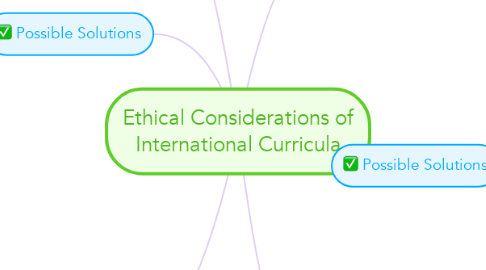Ethical Considerations of International Curricula
by Tracy Peterson


1. Possible Solutions
1.1. Incorporate language "self-study" to allow students to study any language they choose
1.2. Have individuals representing all groups involved in the curricula implementation planning process
1.3. Incorporate varied teaching styles
1.4. Student and parent orientation making behavioral expectations clear
1.4.1. Possible Implications of these Solutions: For many countries and cultures, class divisions have been in place for many hundreds of years. To attempt to eradicate these systems would be to compromise the traditional values of that certain system.
2. Competing Cultures
2.1. Too much language diversity (cannot accommodate all languages)
2.2. Cultural or Religious Bias
2.3. Struggle for teaching methodology dominance
2.4. Class superiorities which may make it difficult for students to mingle
3. References:
3.1. Heyward, M. (2002). From International to Intercultural: Redefining the International School for a Globalized World. Journal of Research in International Education, 1(1), 9-31. Ex
3.2. van Oord, L. (2007). To westernise the nations? An analysis of IB's philosophy of education. Cambridge Journal of Education, 37(3), 375-390.
3.3. Drake, B. (2004). International Education and IB Programmes: Worldwide Expansion and Potential Cultural Dissonance. Journal of Research in International Education, 3(2), 189-205.
3.4. Sullivan, N., & Schatz, R. (1999). When cultures collide: the official language debate. Language and Communication, 19, 261-275.
4. Too Westernized
4.1. Not truly an international curriculum
4.2. Spreading Western values in place of international mindedness
4.3. Western teaching methodology
4.4. Encouraging a monoculture
4.5. Loss of emphasis on native languages and traditions
4.6. Promoting an elitist view of poorer nations
5. Possible Solutions
5.1. Include more diversity in curriculum development in the form of teachers and administrators from "non-western" regions
5.2. Develop programs to strengthen usage and perception of native languages
5.3. Creating "equal-status" experiences with host culture
5.3.1. Implications for these solutions: attempting to create "equal-status" experiences may only exacerbate the difference in socio-economic status between host culture and other.
